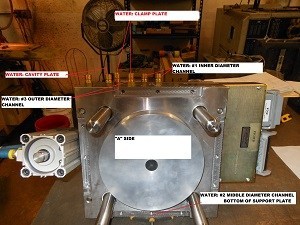In my opinion, the injection molding process is the quickest and most reliable form of producing a thermoplastic part.

Cycle times can be as fast as three seconds and can produce one to 128 parts with each cycle. The repeatability of the part dimension is unmatched as far as high production. In today’s industry, there are resins that are produced for virtually any application from metal replacement, flame retardant, chemical resistant and UV resistant; these are just some of the properties that are available. Also, any color or part texture can be matched.
With the technology that is available today and injection mold design software, most any type of part geometry can be produced for the injection molding process. Injection molds can last for as long as millions of cycles if they are properly maintained. Internal and external threads can be produced to extremely close tolerances. Snap in features can be produced in a wide variety of shapes. The injection molding process is pretty cut and dry, although the settings of the pressures, speeds and temperatures require an experienced injection molder to precisely fine tune each one of the settings to produce a quality part.
Once the injection mold is completed, it must be put into a machine that is sized accordingly. This means the injection molding machine’s clamp tonnage must be enough to keep the mold from opening up and causing the part to flash. The rule of thumb for sizing the machine is three to five ton per square inch of the projected area. The projected area consists of only the outside of the part. For example, a part that is 10″ x 10″ square requires a 300 to 500 ton machine. It does not matter if the part is 1/8″ deep or 12″ deep. We are only concerned about the area around the part. The other important part of the injection molding machine that needs to be sized is the shot size which is the size of the barrel and screw. While the material is being processed in the mold during a cycle, the material in the barrel is sitting in there being heated up. Letting material sit in there too long can cause the degradation of the material and will prevent the part from being molded properly.
Once all of the above items are properly addressed, injection molding quality parts as far as part cosmetics and proper dimensions should be trouble free. I will explain each step of the injection molding cycle in a future blog.
